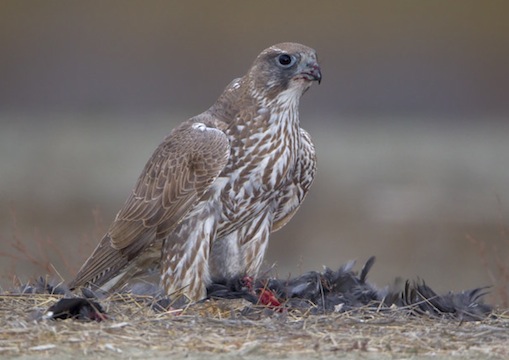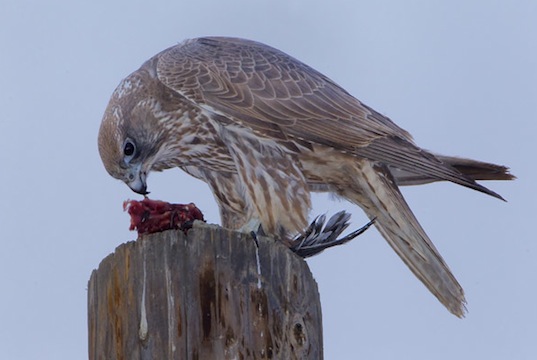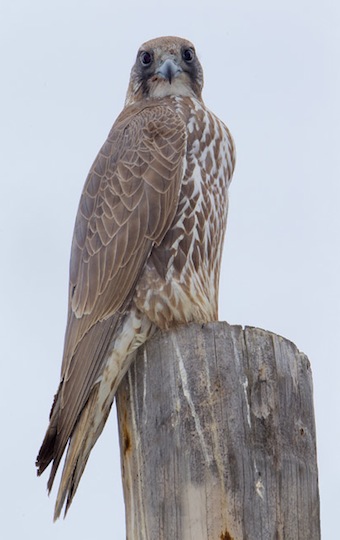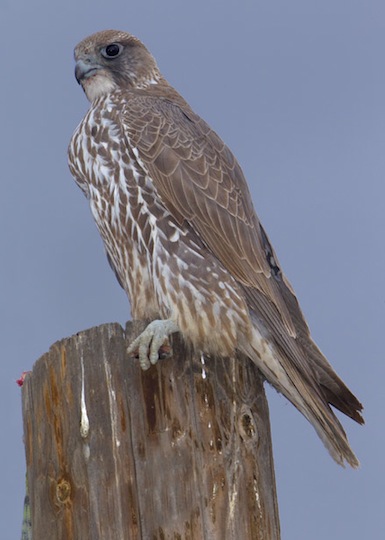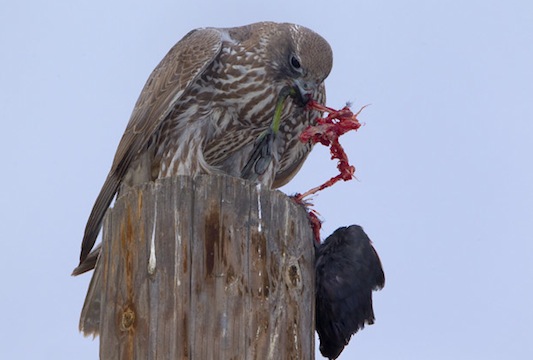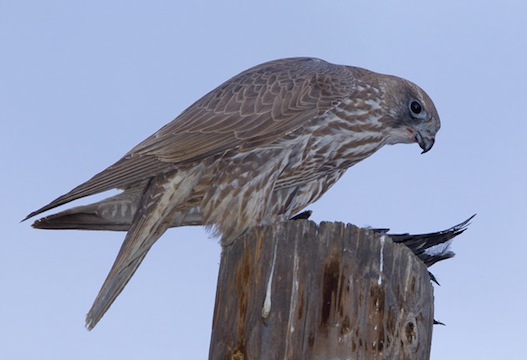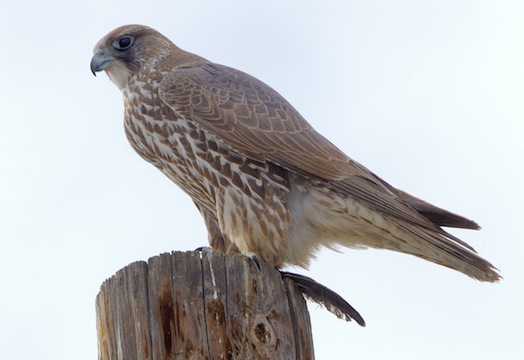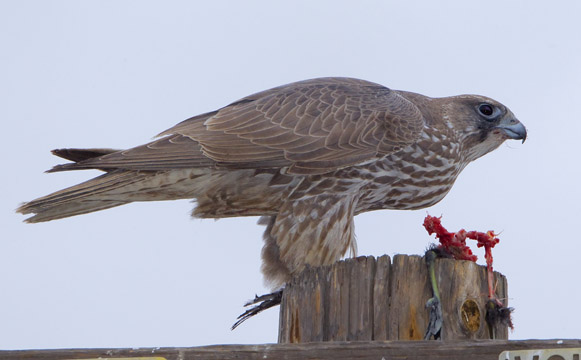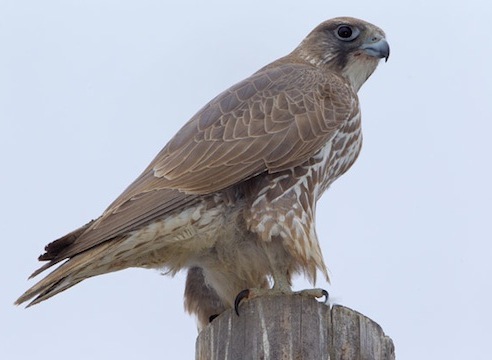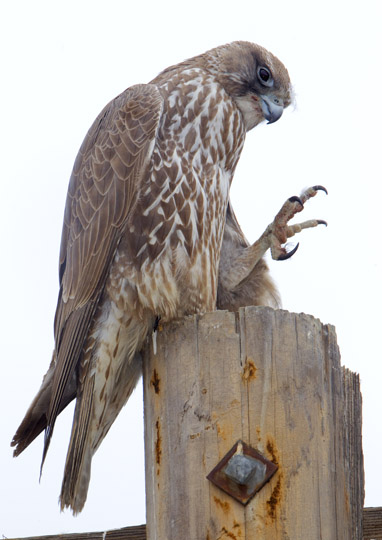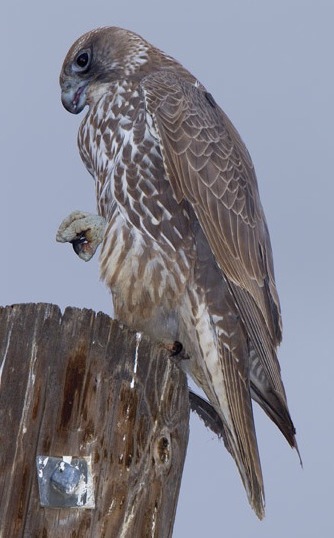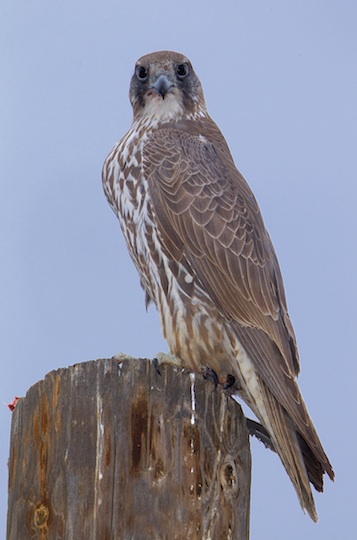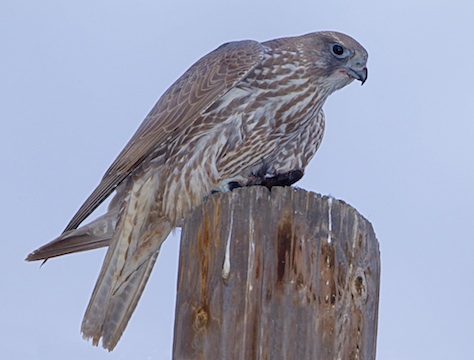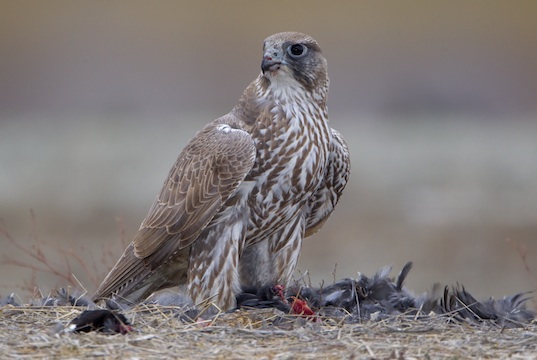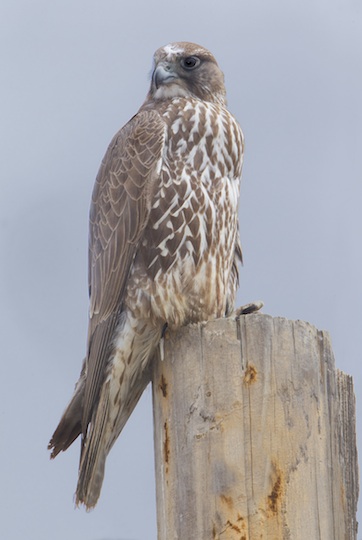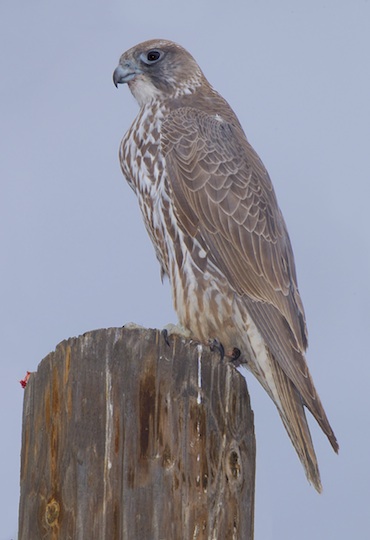 |
 |
|
|
|
|
As a friend once said, "birds fly." Sometimes they fly far out of their normal ranges, offering surprises and thrills to birders who happen upon them. Probably my best vagrant 'find' is shown here: a juvenile gyrfalcon that appeared near where I live in southern California on an overcast day in January 2012. Gyrs are Arctic birds; a few move into the northern US during winter, but this individual is by far the southernmost record for California. It did not seem to be an escaped falconer's bird because it carried none of the usual falconry hardware: no bands, jesses, or radio transmitter. I found it eating a coot on the ground, stopped the car, and took several quick photos out the window. Evidently that was a little unsettling, as it carried the carcass to the top of a power pole, where it consumed the rest in a leisurely fashion and then sat quietly with a full crop while I took lots of images. An hour or two later it was resting comfortably on another pole, and it stayed in the area, on and off, for almost two months (to the delight of large numbers of visiting birders, and the frustration of many others who missed it). This gray-morph individual is intermediate in coloration between the white and dark extremes of this highly polymorphic species. |
|
|
|
